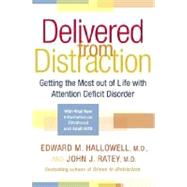
| A Note on Authorship | xix | ||||
| How to Read This Book | xxiii | ||||
| Introduction: Welcome to the World of ADD, Where Landing Is Learned in Midair | xxv | ||||
| Part One WHAT'S IT LIKE TO HAVE ADD? | |||||
|
3 | (17) | |||
|
20 | (8) | |||
|
28 | (10) | |||
|
38 | (10) | |||
|
48 | (4) | |||
|
52 | (6) | |||
|
58 | (11) | |||
| Part Two THREE STORIES THAT TELL THE STORY | |||||
|
69 | (16) | |||
|
85 | (9) | |||
|
94 | (21) | |||
| Part Three MAKING THE DIAGNOSIS OF ADD | |||||
|
115 | (8) | |||
|
123 | (4) | |||
|
127 | (5) | |||
|
132 | (3) | |||
|
135 | (9) | |||
|
144 | (5) | |||
|
149 | (7) | |||
|
156 | (4) | |||
|
160 | (13) | |||
| Part Four MASTERING THE POWER AND AVOIDING THE PITFALLS: THE TREATMENT OF ADD | |||||
|
173 | (4) | |||
|
177 | (4) | |||
|
181 | (6) | |||
|
187 | (6) | |||
|
193 | (12) | |||
|
205 | (9) | |||
|
214 | (4) | |||
|
218 | (4) | |||
|
222 | (3) | |||
|
225 | (15) | |||
|
240 | (7) | |||
|
247 | (13) | |||
|
260 | (8) | |||
|
268 | (5) | |||
|
273 | (11) | |||
|
284 | (10) | |||
|
|||||
|
294 | (4) | |||
|
298 | (9) | |||
|
307 | (7) | |||
|
314 | (4) | |||
|
318 | (10) | |||
|
328 | (8) | |||
|
336 | (7) | |||
| Appendix: A Compendium of Resources | 343 | (26) | |||
| Index | 369 |
The New copy of this book will include any supplemental materials advertised. Please check the title of the book to determine if it should include any access cards, study guides, lab manuals, CDs, etc.
The Used, Rental and eBook copies of this book are not guaranteed to include any supplemental materials. Typically, only the book itself is included. This is true even if the title states it includes any access cards, study guides, lab manuals, CDs, etc.
Excerpted from Delivered from Distraction: Getting the Most Out of Life with Attention Deficit Disorder by Edward M. Hallowell, John J. Ratey
All rights reserved by the original copyright owners. Excerpts are provided for display purposes only and may not be reproduced, reprinted or distributed without the written permission of the publisher.